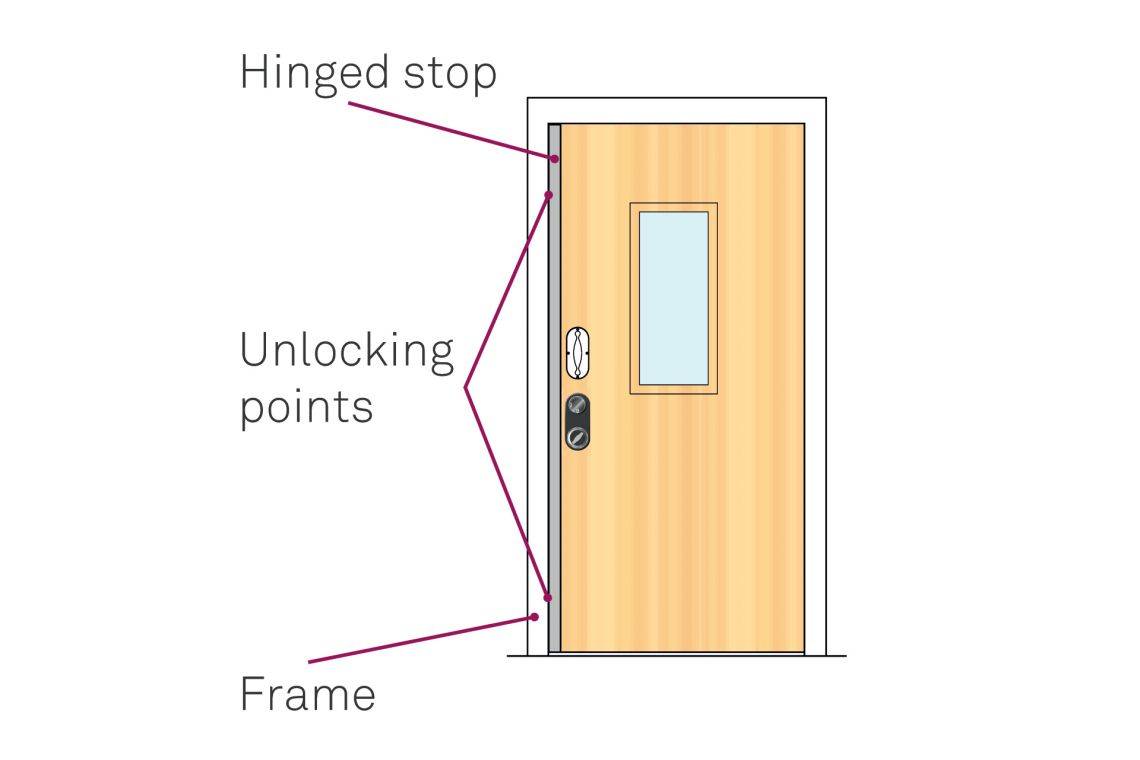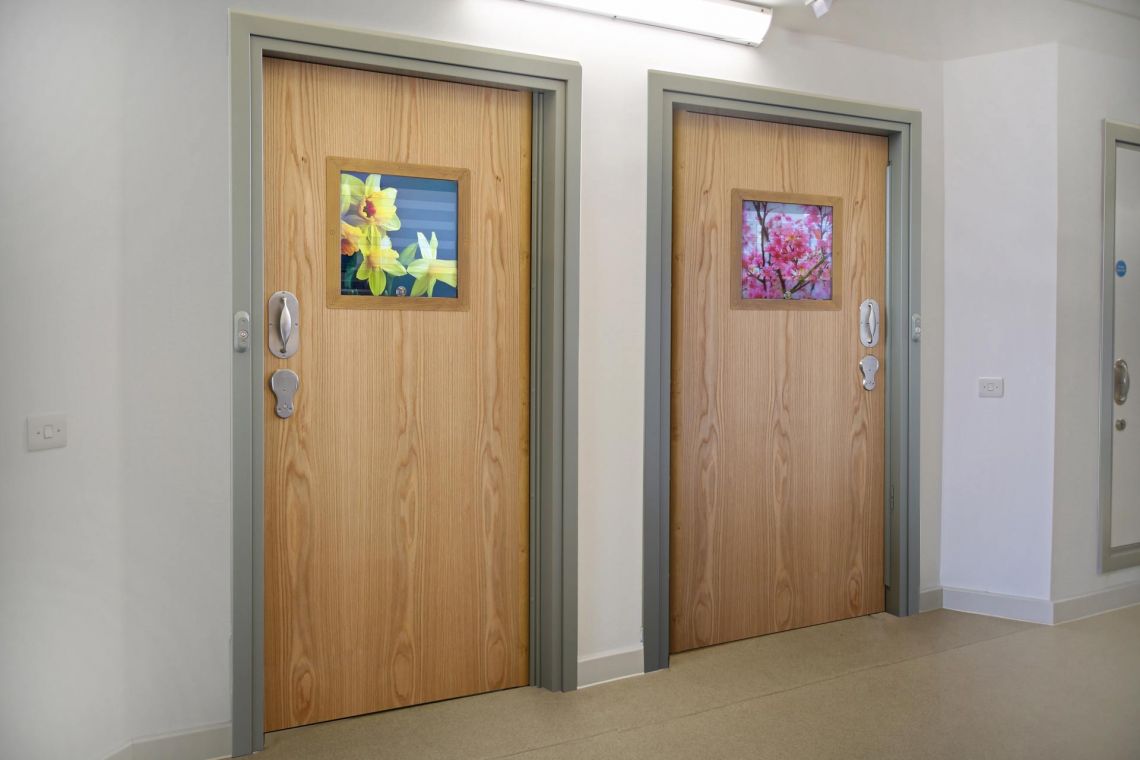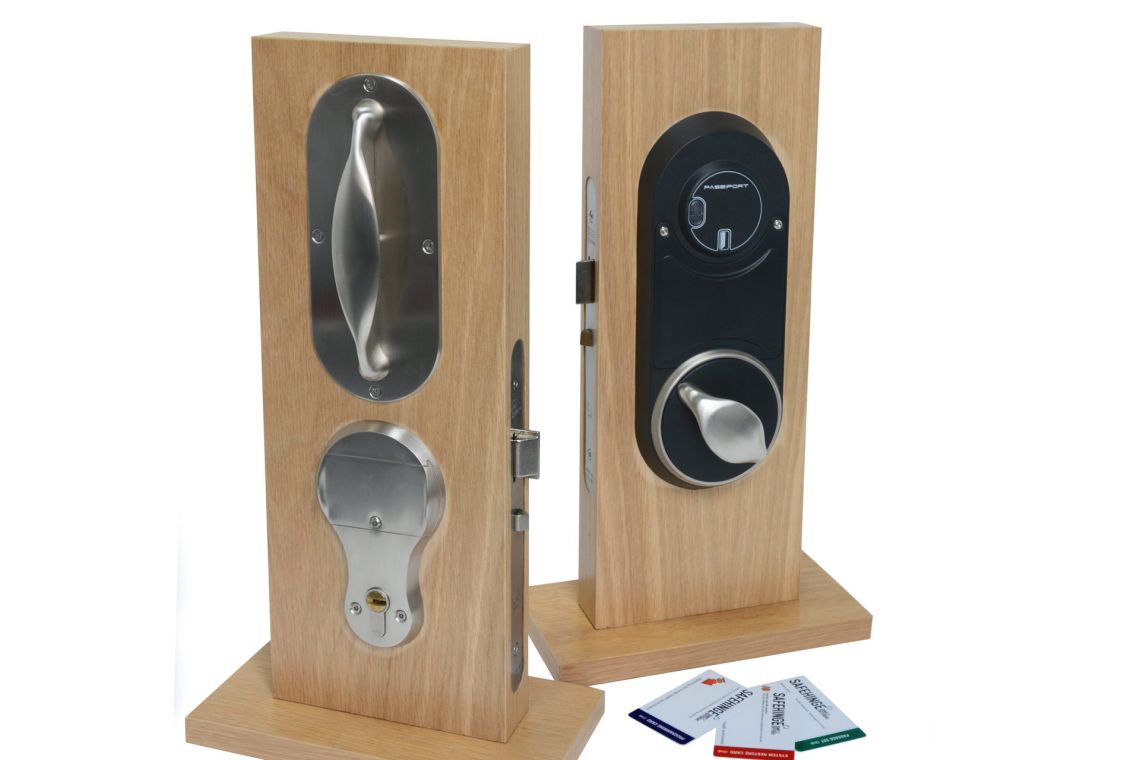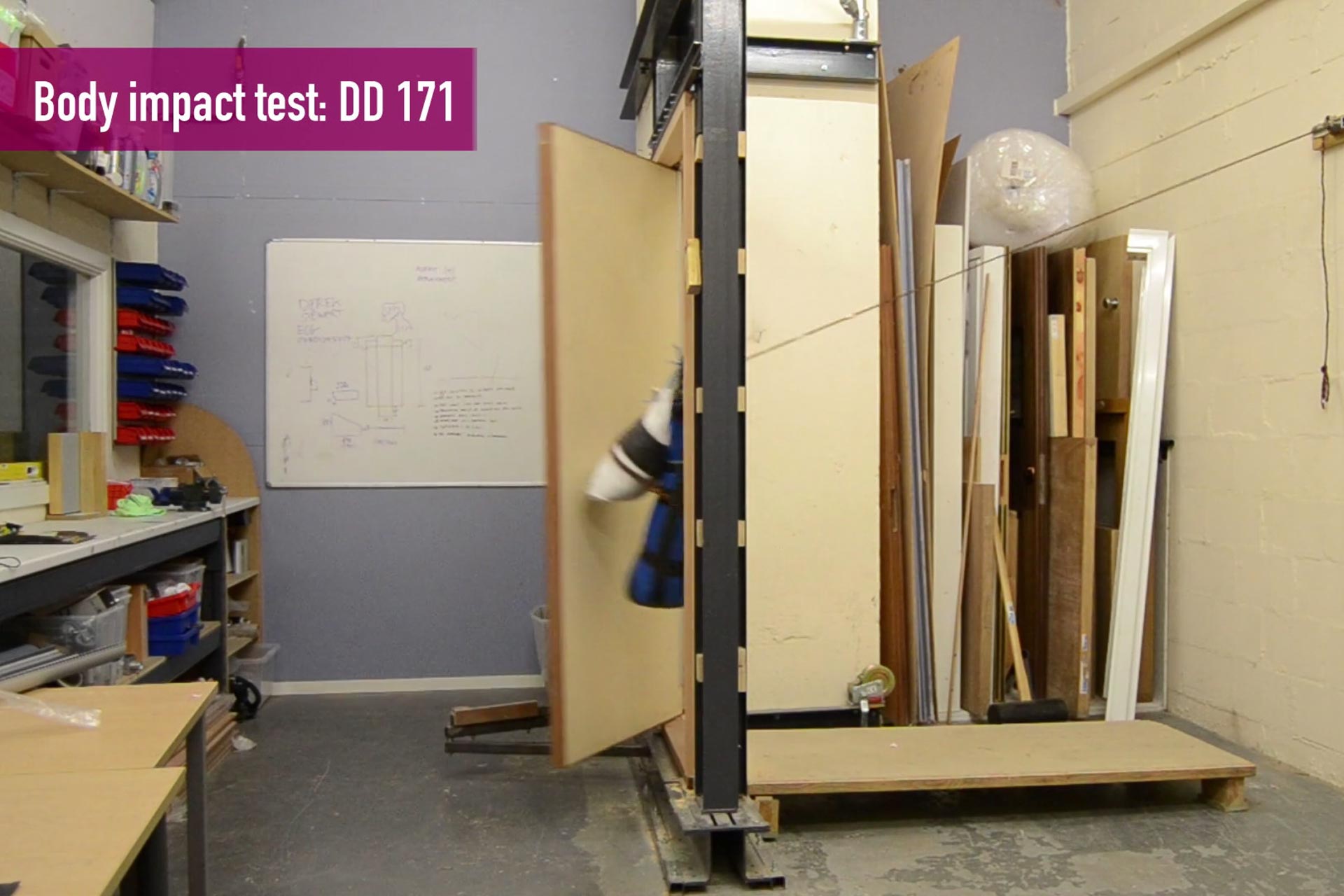- Home
- About us
- Sectors
- Mental Health
- Two-second anti-barricade access
THE FASTEST ANTI-BARRICADE ACCESS ON A MENTAL HEALTH DOORSET
Every second counts when gaining emergency access to a room. So we designed a robust, reliable, and intuitive doorstop, Swiftstop, that’s activated from a single release point by staff safely positioned to the side, giving emergency access in just two seconds – the fastest anti-barricade access of any Mental Health doorset.
As a congrugal part of our anti-barricade doorset, speed of access is maximised, service users are safer and staff can perform their jobs more effectively – with no compromise on robustness or aesthetics.
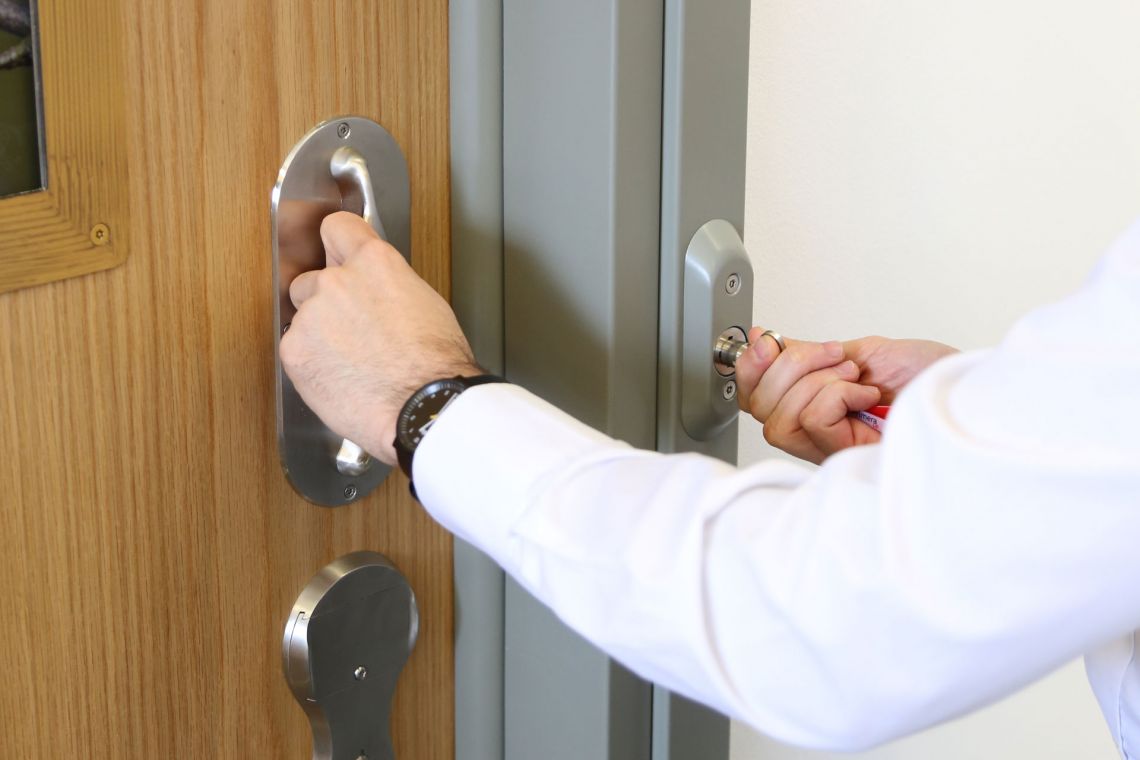
Single release point
The internal multi-point lock system, which ensures day-to-day robustness, is activated with a quarter turn of the staff-only Lifeline key or access card – providing access within two seconds.
Plus it’s so intuitive that agency staff can quickly learn to operate it.
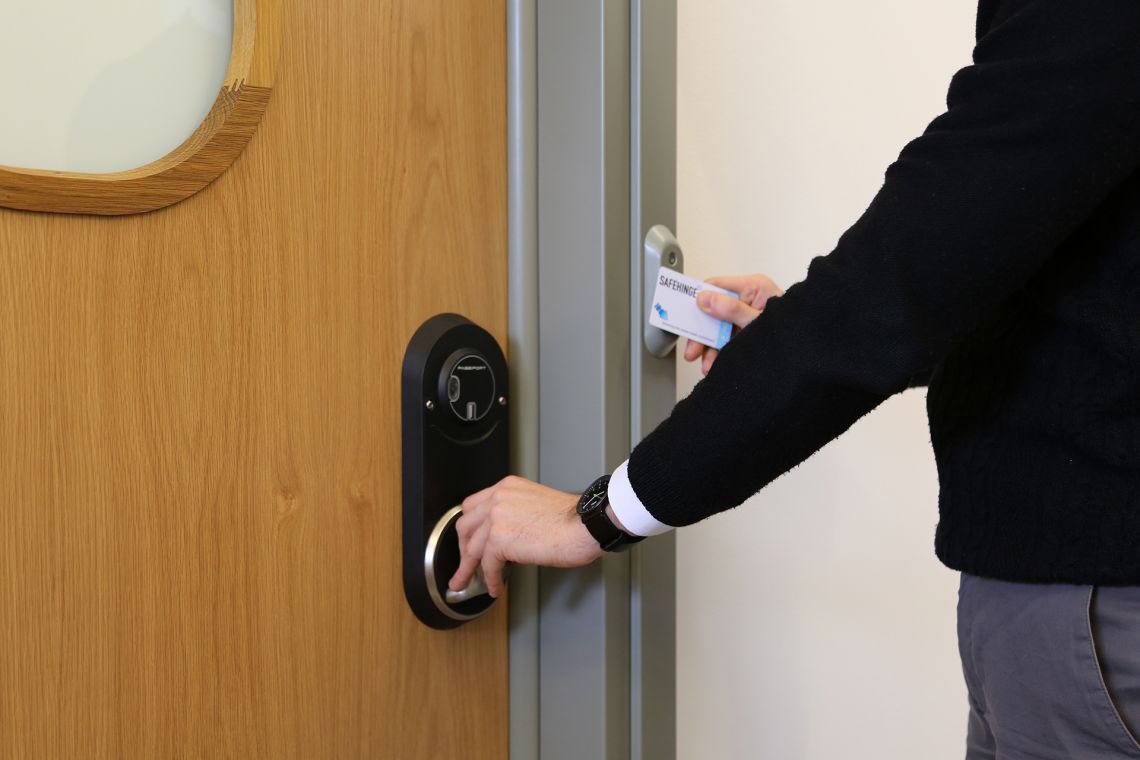
Enhances staff safety
Staff can activate the anti-barricade doorstop with one hand. Plus, because they’re positioned to the side of the swing path, they won’t be hit if the door is rammed. So they stay safe and are in the best position to offer rapid assistance.
Because the stop is integral to the frame and collapses inside, there's no removeable section which could used as a weapon.
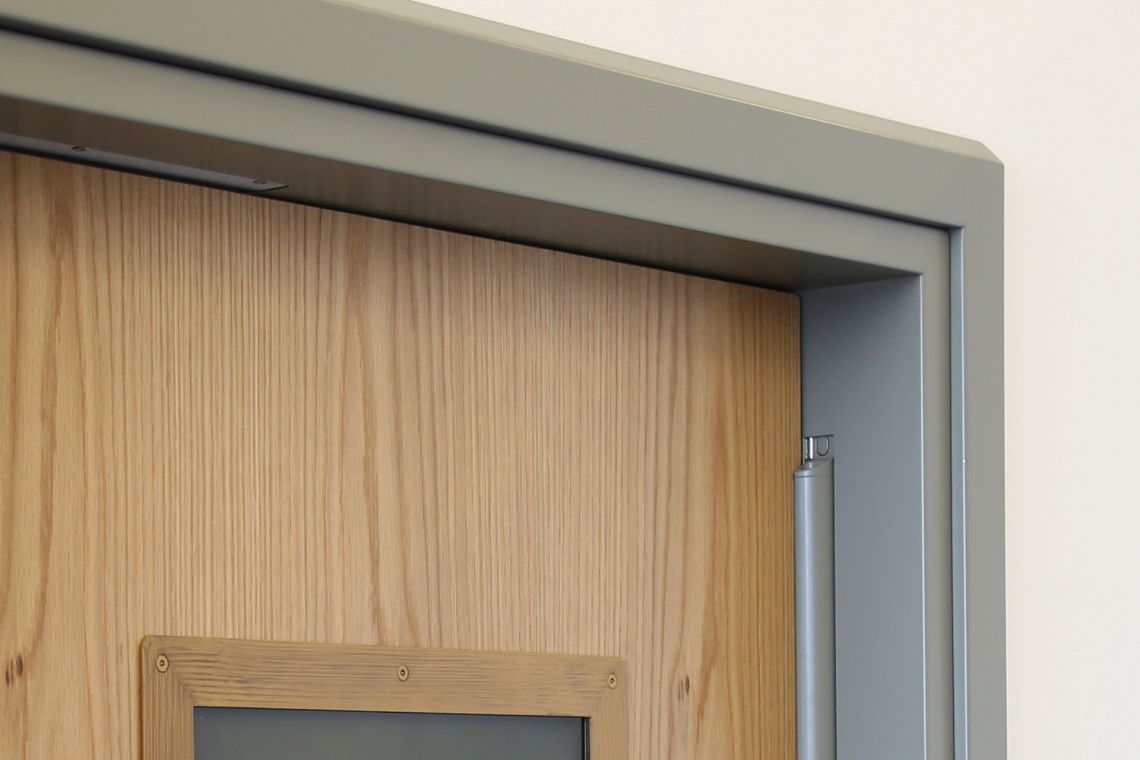
No unsupervised ligature point
Thanks to its reduced height and angled top, the top section is visible – so staff have a clear view of the door corner, without opening the vision panel, enabling casual observations as staff walk past – enhancing service user safety.
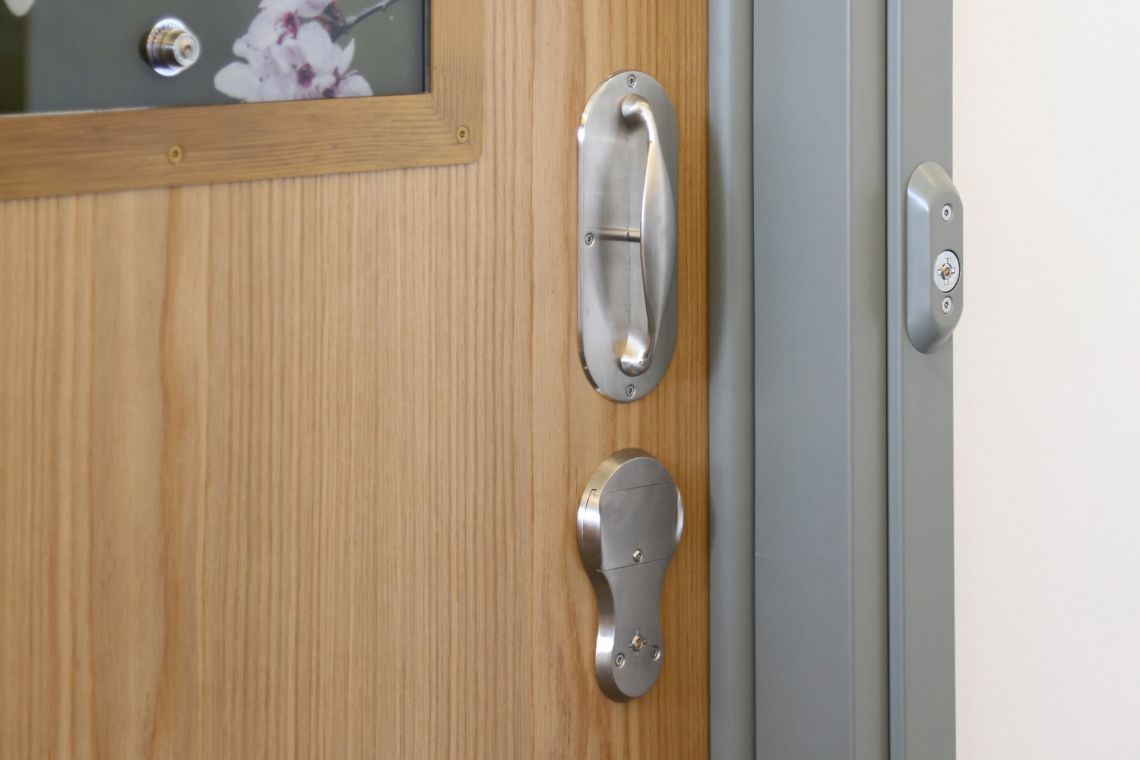
Unified key to reduce confusion
The anti-barricade stop is specificied with the Lifeline closed keyway as standard, so the same Lifeline key can operate the door lock, vision panel and anti-barricade stop.
With just one key to carry, it's faster for staff to operate the door and minimises confusion in stressful situations.
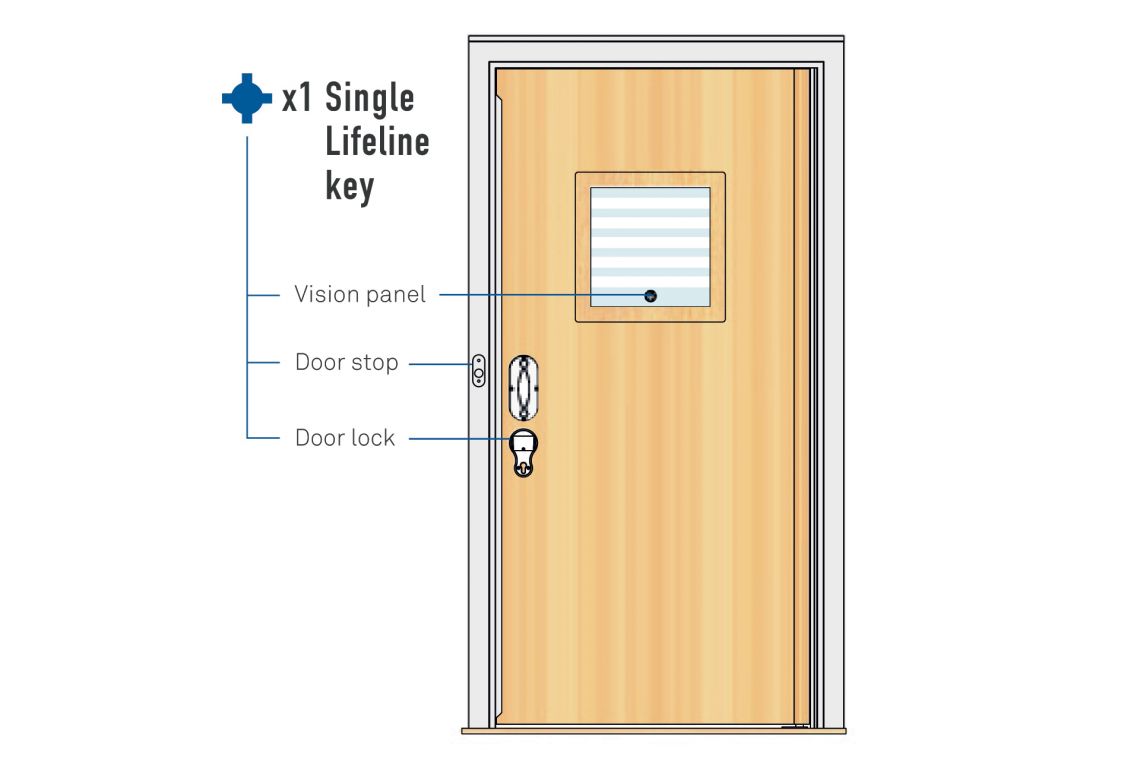
HOW IT WORKS
The anti-barricade stop runs the full height of the door and has a single point of operation from the corridor side. The locking mechanism can be mechanical – using the Lifeline closed keyway – or electronic – recording access on our smart platform.
The integral stop collapses into the frame, so it won't get into the wrong hands.
Imoportantly, speed of access is maximised and staff are safety positioned to the side of the swing path.
LIMITATIONS OF HINGED STOPS
When we developed the collapsible anti-barricade stop we we worked closely with NHS and private care providers to understand the limitations of existing anti-barricade stops. And the finished product addresses those limitations – providing the fastest emergency access, making doors more homely, and keeping staff and service users safer.
- Looks institutional
- Vulnerable to internal pressure
- Impacts staff safety
- Conceals a ligature point
- Multiple unlocking points
Looks institutional
Looks institutional
Customers told us that hinged stops are bulky and the exposed hinge knuckle looks institutional.
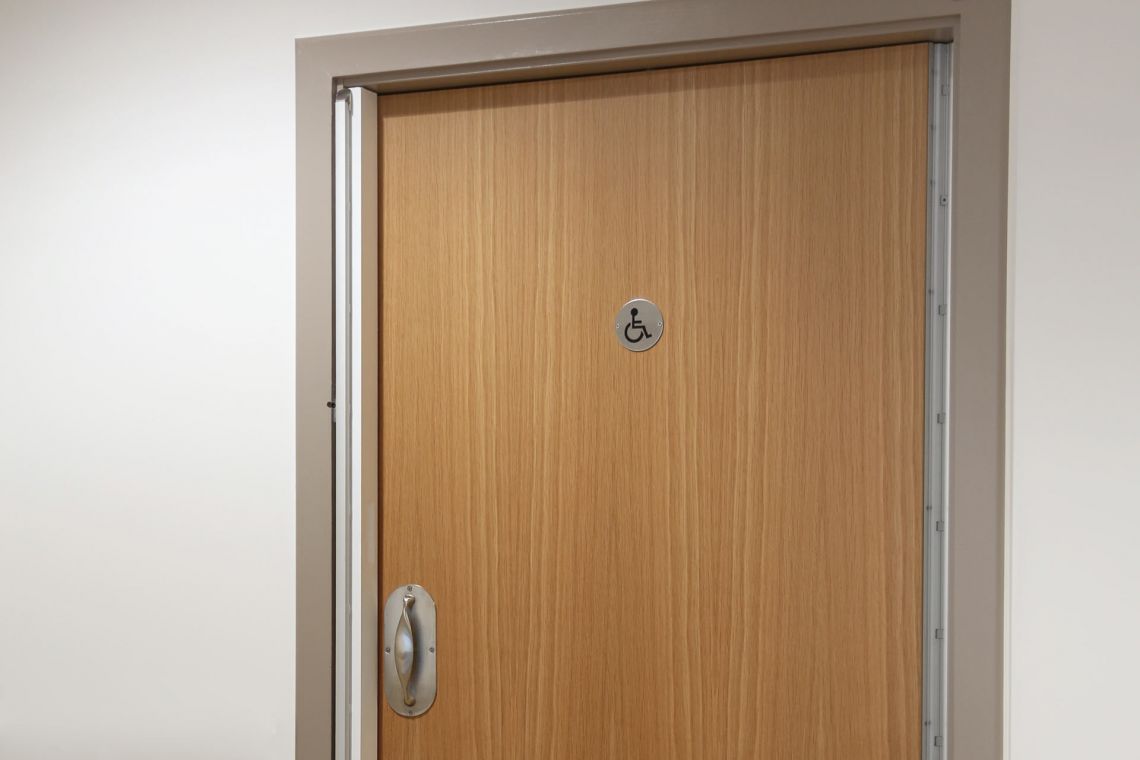
Vulnerable to internal pressure
Vulnerable to internal pressure
The hinged stop moves across the face of the door upon release. However, if pressure is applied on the inside of the door, the mechanism suffers increased friction. This can cause it to stick – delaying access and putting the service user at risk.
This is a particular issue for three-sided strike plates because there’s no resistance from the inside out. This strike plate design also creates a mechanical vulnerability, cause break out of ironmongery following abuse.
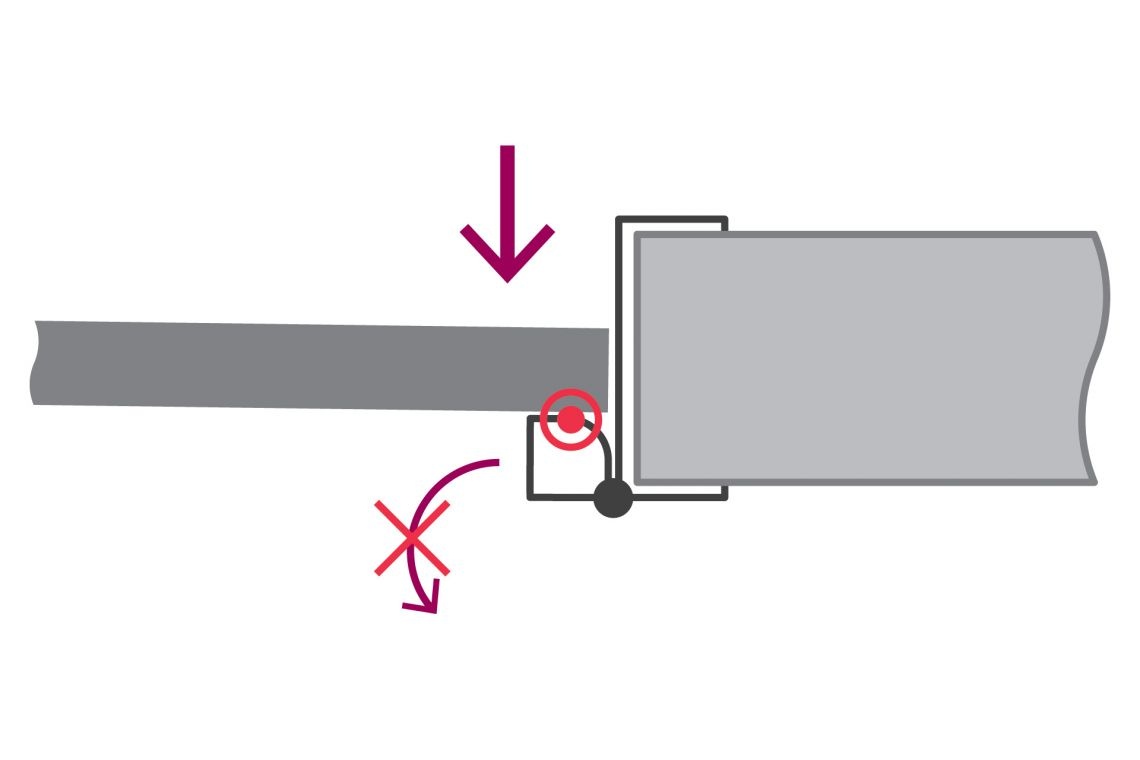
Impacts staff safety
Impacts staff safety
Staff put their hands in front of the door to operate hinged doorstops. So if a service user is applying pressure to the door or ramming it, this could cause staff injury.
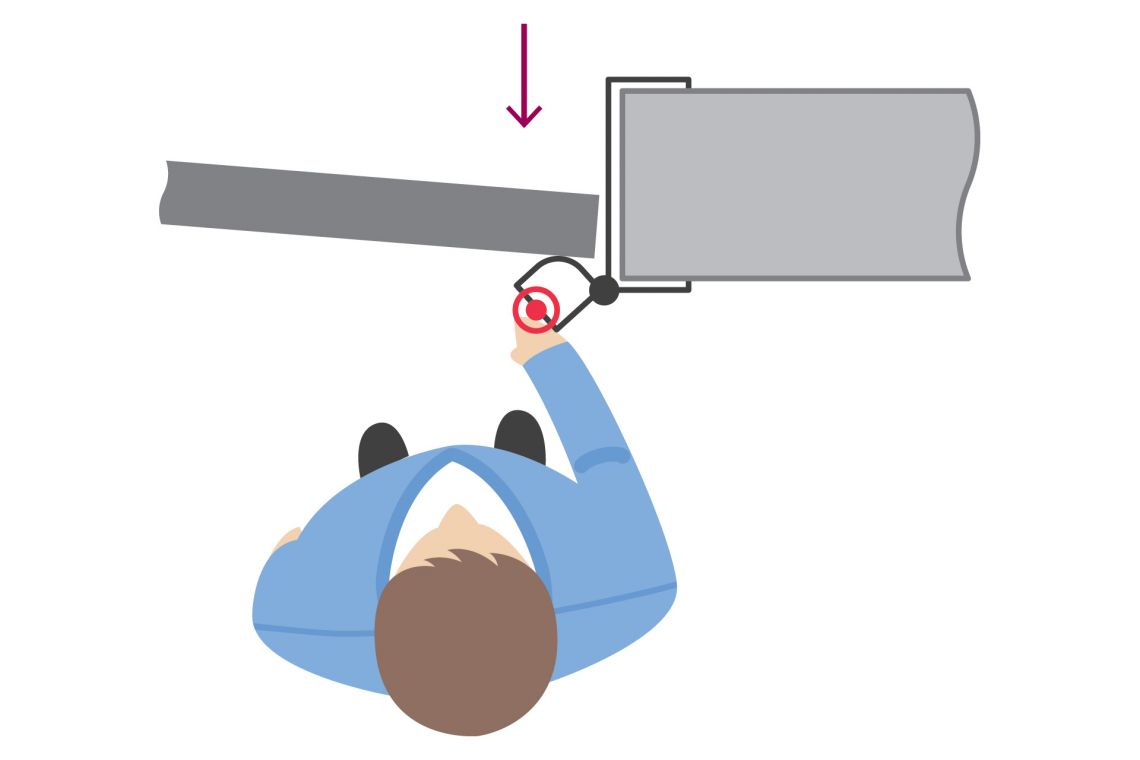
Conceals a ligature point
Conceals a ligature point
Full-height stops create a concealed ligature point at the top corner of the door, providing the risk of self-harm.

Multiple unlocking points
Multiple unlocking points
Multiple unlocking points delay entry and can cause confusion in stressful situations. If just one locking point remains unactivated, the stop will not release and staff must work out which it is – increasing stress.
